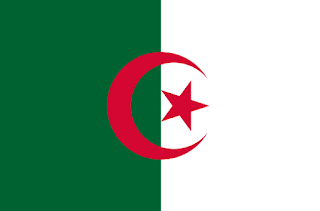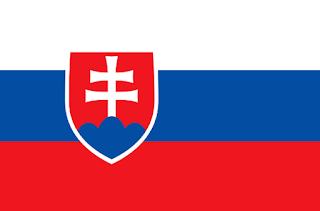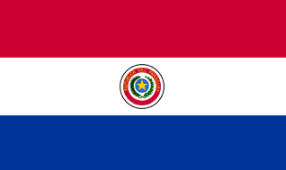FACTS ABOUT PANAMA
AMAZING
FACTS ABOUT PANAMA
1.
The official name of Panama is the “Republica
de Panama”.
2.
Panama City is the capital of Panama.
3.
The total population of Panama is 3,753,142.
4.
The natives of Panama are called
Panamanians.
5.
The Balboa (PAB) is the official currency
of Panama.
6.
Panama shares a border with Colombia and
Costa Rica.
7.
The literacy rate of Panama is 95%
8.
The earliest recorded mention of a canal
through Panama was made by Charles V, King of Spain and Holy Roman Emperor. In
1534 he wanted a route to be devised that would ease the danger and length of
the voyages of Spain’s ships traveling between Peru and Spain. Thomas Jefferson
encouraged the Spanish to consider this idea in 1788.
9.
The Panama Railway was built by the
United States across Panama in 1855. This railway largely determined the route
the canal itself would later take.
10.
A sea level canal system was not
feasible in Panama due to its nine-month long rainy season. It would have
flooded out the canal.
11.
A lock system was devised instead. Two
French engineers, Armand Reclus and Lucien Wyre, published a French proposal
for the canal in 1877. The French began the original construction in the 1880s
but stopped when worker mortality and the rains took too high a cost.
12.
The United States took over the initial
construction from the French in 1904 and completed the canal ten years later.
It officially opened on August 15, 1914, with the U.S. in control of the Canal
Zone.
13.
There are locks at each end of the canal
to lift ships up to Gatun Lake, a man-made lake at 26 meters (85 feet) above
sea level, and then back down to the opposite coast.
14.
These original locks are 335 meters (110
feet) wide.
15.
The 1977 Torrijos-Carter Treaties ceded
U.S. control of the Canal Zone back over to the Panamanian government. The two
countries controlled it jointly from 1977 to 1999.
16.
Control of the Panama Canal passed back
into their nation’s hands at midnight on the last day of the 20th century,
December 31, 1999.
17.
On June 26, 2016, the new and expanded
third lane of the canal began commercial operations after a long construction
period lasting from 2007 until 2016.
18.
Christopher Columbus visited in 1502 and
Balboa arrived to explore the area in 1513.
19.
Settled as a colonial area by the
Spanish, it became their principal shipping point to and from Central and South
America back to Spain in during its colonial days.
20.
When Central America revolted against
Spain in 1821, Panama joined the already independent country of Colombia. It
would then spend the next 82 years struggling to gain its independence from
Colombia.
21.
When Colombia rejected the United
States’ Canal proposal in 1903, Panama finally broke free and declared its
independence, which the U. S. immediately recognized in order to back the new
government.
22.
The U. S. paid Panama $10 million for
the Canal Zone and canal rights in perpetuity with an additional per annum of
$250,000. Construction began in 1904. The U. S. also wielded considerable
influence in Panama’s affairs. By 1955, the per annum had risen to $1,930,000.
23.
In September of 1977, President Jimmy
Carter and Panama’s General Omar Torrijos signed treaties returning to Panama
gradual control of the Canal Zone until it was completely theirs by the end of
the century. The treaties also guaranteed Panama’s neutrality in operating the
canal and called for U. S. military bases to be phased out.
24.
Seven years later, Panama’s first
president elected by the people in 16 years was inaugurated in 1984. President
Nicholas Ardito Barletta was a puppet of the head of the secret police, General
Manuel Noriega.
25.
Noriega replaced the president a year
later with Vice-President Eric Arturo Delvalle and the U. S. indicted Noriega
for drug trafficking in 1988. When Delvalle tried to fire Noriega, the general
forced the national assembly to replace him with Manuel Solis Palma. Finally,
the assembly named Noriega “maximum leader” in December of 1989 and declared
Panama and the United States to be at war.
26.
Responding to the death of a U. S.
soldier, the U. S. had 24,000 troops seize control of Panama City and attempt
to capture Noriega. He surrendered on January 3, 1990, was taken to Miami and
was later tried and convicted of drug trafficking. Elections have been held in
Panama ever since.
27.
Millionaire businessman Ricardo
Marinelli was elected president in May 2009 and his Vice-President Juan Carlos
Varela succeeded him in May 2014.
28.
The revenue from the Panama Canal tolls
represents a significant portion of the country’s GDP annually (Gross Domestic
Product). Since 2010, in fact, Panama’s economy has been Latin America’s second
most competitive economy as one of its fastest growing and most well-managed
economies.
29.
Panama exports bananas, pineapples, and
watermelons. It also exports gold as well as iron and steel waste. Sugar and
shrimp as exported too. Panama’s major trading partners are the United States,
Sweden, the Netherlands, Mexico, Costa Rica, Canada, China, and Italy.
30.
Panama’s natural resources include its
mahogany forests, copper, shrimp industry and the hydro-power it generates from
the Rio Chagres and the Rio Chepo. Agricultural products include bananas,
coffee, rice, corn, shrimp, sugar cane, livestock, and vegetables.
31.
Tourism is growing in Panama. The
Tocumen International Airport in Panama City is Central America’s largest and
flights connect Panama to all parts of the world.
32.
The monetary units of Panama are the U.
S. dollar and the Balboa. Panama has its own coinage.
33.
Panama has attractions for every member
of the family and every age group. From history to art and culture; outdoor
activities to water and beach sports; to nightlife and dining experiences,
Panama has it all.
34.
The peninsula of Casco Viejo is a busy
colonial neighborhood with historical ruins and cobblestone streets. This is
the site of the original 1519 Panama City, today a UNESCO World Heritage
Site.
35.
The Miraflores Visitors Center at
Miraflores Locks — Panama Canal has large observation decks from which to watch
the movement of vessels through the canal itself. It also offers exhibition
halls, a refreshment stand, a gift shop and a nice restaurant. A historical
mural of the tremendous effort it took to build the canal is mounted in the
rotunda of the Panama Canal Administration Building and open to the public.
36.
The spectacular Biomuseo is itself a
work of modern art and houses exhibits that tell the story of how the Isthmus
of Panama and its emergence affected the history of the world. It includes the
Gallery of Biodiversity, the Panamarama, The Surge Bridge, The Grand Exchange,
aquariums, galleries, observation posts and a cafe.
37.
The Panama Canal Museum is part of
Panama’s Old Town district and is a public non-profit institution. It contains
ten permanent exhibits and several temporary ones each year. Additionally,
Panama City offers the Panama History Museum, the Museum of Natural Sciences,
and the Museum of Colonial Religious Art as well as others.
38.
Ecotourism is popular and Panama is home
to the most diverse wildlife population of all the countries in Central
America. Bird watching is thrilling, with almost 1,000 bird species to observe
from the tiniest Volcano Hummingbird to the Harpy Eagle, the largest bird on
the continent. Over a third of Panama is Natural Park land. Dolphin Sails and
Whale Watching cruises, and Sea Turtle observations are also available.
39.
Surfing and snorkeling are popular on
the sandy beaches on both the Pacific and the Caribbean coasts of Panama. All
the beaches are public property in this country. Visitors also enjoy Coiba National
Marine Park, Taboga Island, the Pearl Islands and the Bay of Panama.
40.
Bicycling is popular on the Amador
Causeway, a six-kilometer-long path that is bordered by the ocean on both
sides. Hiking on any of a number of established trails is popular as well.
Summit National Park includes a botanical garden in addition to well-marked
paths.
41.
Camping, canoeing, and kayaking are all
popular in the many National Parks. Most of the rivers, such as the Rio Grande,
the Manoni River, and the Chagres are Class II, III, and IV waters.
42.
Panama’s Buenaventura Golf Course is
arguably the best in all of Latin America. This 18-hole par 72 course was
designed by Jack Nicklaus and includes gorgeous views of the Pacific Ocean.
43.
The younger members of the family will
be interested in some other attractions and local residents of Panama.
44.
Skateboarding is popular with the local
people and there are several skate parks in or near Panama City. The Coastal
Strip 3 Skatepark and Skatepark Chorrera are open to the public while the Skatepark
Punta Chamo is a private one in the Nitro City resort.
45.
The Rod Carew Stadium is home to the
national Panama Metro professional baseball club. There are eight other
professional regional teams in Panama. Baseball is Panama’s national sport.
More than 140 Panamanian players have played pro ball in the U.S, including Ron
Carew and Carlos Ruiz.
46.
The Gamboa Cable Car ride is an aerial
car that takes you for a several kilometers-long ride through and above the
jungle canopy to the top of Cerro Relado from which you can bird and animal
watch as you ride. Frequently spotted are coatimundis, howler monkeys,
capybaras, slothes (slow-moving tropical American mammals that hang upside down
from the branches of trees using their long limbs and hooked claws), toucans,
parrots, and motmots.
47.
The highest point in Panama is the
Volcan Baru (a dormant volcano) that is 3,475 meters (11,401 feet) high.
48.
There are almost 500 rivers in Panama.
Three hundred of them empty into the Pacific Ocean and the rest empty into the Caribbean
Ocean.
49.
Amerindian and mixed (West Indies)
people form fourteen percent of the Panamanian population with whites only ten
percent and Amerindians eight percent.
50.
The indigenous groups of people are the
Kuna, the Embera, the Waonan, Ngobe, Bugle and the Nassau plus the Terribe
groups.
51.
Spanish is the official national
language of the people of Panama although many are bilingual and speak both
Spanish and English. In some areas, Amerindian dialects are still spoken.
52.
Once educated only in Jesuit schools,
today all children receive a public education. The literacy rate in Panama is
an impressive 94.1 percent.
53.
The sale of native crafts, popular with
tourists, helps support the people and their villages. Colorful Molas are the
elaborate embroidered panels made by the Kuna women and used as the front and
back panels of their blouses.
54.
Tagua Nut carvings of animals are also
popular with the tourists and for export. Also known as corozo or vegetable
ivory, it is a very desirable substitute for elephant ivory (now illegal) and
is a renewal resource. Buttons were made of the tagua nut and exported
throughout much of the 19th century. The Wounaan and Embera tribes produce a
sustainable income from their carvings of animals like dolphins, turtles, birds,
monkeys and many others as well as producing jewelry pieces from the nuts.
55.
The women of these tribes also make
beautiful baskets from the nahuala plant’s fibers as well as from the chunga
palm’s. Each basket is a piece of tribal folk art made from the plants of the
Darien Rainforest.
56.
The men of the Wounaan people have for
generations produced amazing wood carvings from cocobolo wood. It comes from a
special indigenous hardwood tree in the Darien rainforest. Cocobolo is quite
hard and highly polished with beautiful variations in its natural colors and
grains. The wood ranges from a golden yellow color to rich reds or browns and
even to black, depending on the tree from which it is harvested.
57.
Panamanian cuisine is a combination of
Spanish, Native American and African ingredients and dishes. The dishes
typically have milder flavors than those of pungent Caribbean food. Staples of
a Panamanian diet are fruit, rice, plantains, wheat flour, beef, chicken,
seafood, pork and yucca/cassava.
58.
Two Panamanian dishes are Sancocho, a
special stew with an assortment of vegetables and packed with meat (usually
chicken); and Carimanola, a fried yucca roll stuffed with boiled eggs and meat
filling. Tamales and empanadas are also popular.
59.
Popular side dishes include yucca frita
and plantains. Yucca fritas are fried yucca root that taste like a tropical
version of french fries. Plantains are served three ways. Patacones are fried
green plantains cut crosswise and served salty; Maduros are ripen fried
plantains that are a bit sweeter; and Tajadas, which are baked plantains cut
lengthwise and covered with cinnamon. All are delicious.
60.
For dessert, try a piece of Pasel de
Tres Leches (Tres Leches Cake). This is a cake that is soaked in three
different kinds of milk (leche): cream, sweetened condensed milk, and
evaporated milk. Also have a Panamanian snow cone, a Raspados, topped with the
sweet syrup flavor of your choice and condensed milk. Sometimes molasses or
malt powder is added as well.
61.
Panama grows and serves its own world-class
coffee as well as local beers, including Atlas, Balboa, Soberana and Panama
Cerveza. Beer is inexpensive at around a dollar in restaurants. There are
several microbreweries in the country as well.
62.
The population of Panama is 85 percent
Roman Catholic. The two largest public holidays revolve around church-related
events: Christmas and Carnaval. A Christmas parade is held in Panama City on
December 25 with floats and a marching band of drummers. Afterwards carols are
sung around a huge tree. Carnaval is a ritual celebrated for the five days
prior to Ash Wednesday. A queen is chosen and other festivities occur.
63.
Over 400,000 Panamanians hold on to
their native cultures and languages.
64.
The dominant culture in Panama has
Spanish origins and national pride runs very deep, as demonstrated by the
following popular saying: “puento del mundo, corazon del universo” (bridge of
the world, heart of the universe).
65.
The extended family is the most
important social unit for the native population and the city dwellers. There
are almost no elderly care facilities in Panama because families care for their
own. The extended family is their backbone.
66.
Personal appearance and basic good
hygiene are valued by the Panamanian people. Showing good manners, being polite
and treating others with respect is expected and important. Don is used as a
courtesy title for men and Dona for women.
67.
Shirts and pants (or a dress) should be
worn in public. Bathing suits are only for the beach and this law is enforced.
68.
Panama is about the size of the state of
South Carolina.
69.
The rainy season there lasts for nine
months, from mid-April until November, so plan accordingly.
70.
Panama has a well-established ex-patriot
population which is growing as more and more international retirees find it an
ideal home for their retirement.
71.
Panama has been strongly influenced by
years of connection with the United States, as evidenced in their dress and the
popularity of American music there.
72.
The American Society of Civil Engineers
has named the Panama Canal one of the modern world’s seven wonders.
73.
It takes six to eight hours to travel
through the canal.
74.
The United States estimates 5,600
workers died of disease (yellow fever) and accidents during the U.S. building
phase of the canal.
75.
The Panama Canal serves more than 144 of
the trade routes in the world.
76.
President Woodrow Wilson sent a signal
from the White House by telegraph on October 10, 1913, that triggered the
explosions that flooded the center of the Panama Canal and joined the Atlanta
Ocean to the Pacific Ocean.
77.
The Panamanian flag is also red, white
and blue, as is the United States’.
78.
Panama Exports:
fruit and nuts, fish, iron and steel waste and wood.
79.
Panama Imports:
fuels, machinery, vehicles, iron and steel rods and pharmaceuticals.
80.
The internet country code for Panama is .pa.




Comments
Post a Comment